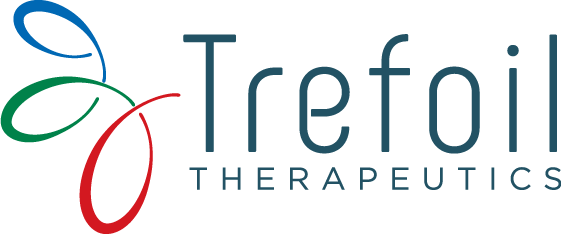
Trefoil Therapeutics Announces Positive TTHX1114 Phase 2 Study Data Showing Corneal Regeneration and Vision Recovery following Descemet Stripping Only (DSO) Surgery
Chicago – September 29, 2022 – Trefoil Therapeutics, a clinical-stage biotechnology company focused on restoring sight to people with corneal diseases, today announced positive Phase 2 results for TTHX1114 in patients with Fuchs Endothelial Corneal Dystrophy (FECD). TTHX1114, a proprietary engineered fibroblast growth factor-1 (FGF1) variant, is delivered as an intracameral injection into the anterior chamber of the eye. Most corneal transplants are performed due to FECD.
Presented at the World Cornea Congress 2022, data from the Phase 2 STORM trial examined if treatment with the investigational agent TTHX1114 led to faster vision recovery in patients undergoing a Descemet Stripping Only (DSO) procedure. DSO is an alternative to corneal transplantation that does not require donor tissue and thus removes the potential for graft rejection and the need for postoperative immunosuppression. Additionally, DSO is more accessible to the millions of people living with corneal diseases around the world. The Phase 2 STORM trial results showed multiple positive efficacy outcomes for TTHX1114 as an adjunct to DSO and a favorable safety profile, including:
- Recovery of vision to 20/40 in a mean time of 4.2 weeks following DSO and a single intracameral injection of TTHX1114
- A significant dose-dependent effect of TTHX1114 on the recovery of central corneal thickness (CCT), with median CCT recovered to better than baseline by day 84
- TTHX1114 and the intracameral injection procedure were well tolerated, with no serious adverse events reported
“The STORM trial data show endothelial cell restoration and patient-reported visual recovery that indicate endothelial cells are regenerating, migrating and helping to accelerate healing after DSO and a single injection of TTHX1114,” said Francis W. Price, Jr., M.D., founder and president of Price Vision Group and the Cornea Research Foundation of America, and the lead investigator in the trial. “For the millions of people with corneal endothelial disease, this has the potential to be a first-line pharmacological treatment option.”
Corneal endothelial diseases/dystrophies (CED) occur when the eye’s finite number of endothelial cells decline and stop functioning, which results in swelling of the cornea. In FECD, this is compounded by the formation of collagen deposits on the inside of the cornea that cause progressive and potentially debilitating vision loss. In a given year in the U.S., an estimated 180,000 people are at risk of vision loss due to Fuchs dystrophy, of which 78,000 will need corneal transplants within two years.i
However, there are approximately 30,000 corneal transplants performed in the U.S. every year, leaving tens of thousands without viable options to address their progressive vision loss.ii
“Corneal transplantation is not an ideal option for many people living with corneal endothelial diseases for a number of reasons including limited global donor supply, cultural nuances, and complexity of the procedure and the time to recovery of vision,” said David Eveleth, Ph.D., co-founder, president and CEO of Trefoil Therapeutics. “TTHX1114 offers the potential to restore vision by regenerating the cornea’s own endothelial cells. We will further evaluate these data to determine next steps in our clinical and regulatory process.”
About TTHX1114
TTHX1114 is an investigational engineered variant of the naturally occurring molecule Fibroblast Growth Factor-1 (FGF1), which stimulates cell proliferation and migration as well as protecting cells from stress and injury. Trefoil’s clinical program for TTHX1114 in patients with FECD and other corneal endothelial dystrophies (CED) is aimed at regenerating corneal endothelial cells lost due to the disease and thereby improving vision. FECD is a progressive disease that is the leading cause of corneal transplantation in the U.S. Although transplant surgery with human donor corneas may be effective in restoring vision, post-surgical recovery can be challenging, and most patients require long-term immunosuppressive therapy to minimize the risk of graft rejection. TTHX1114 is being studied for the treatment of corneal endothelial dystrophies via intracameral injection into eyes.
REFERENCES:
i David C. Musch; Leslie M. Niziol; Joshua D. Stein; Roheena M. Kamyar; Alan Sugar. Prevalence of Corneal Dystrophies in the United States: Estimates from Claims Data, Clinical and Epidemiologic Research, Volume 52, Issue 9, 2011
ii 2021 Eye Banking Statistical Report. Eye Bank Association of America. (2022). Retrieved from
https://restoresight.org/members/publications/statistical-report/


